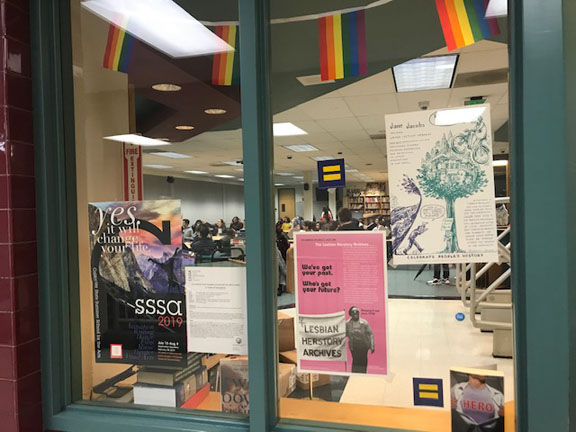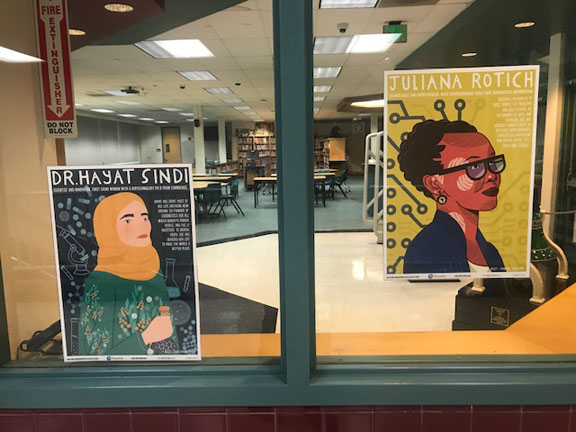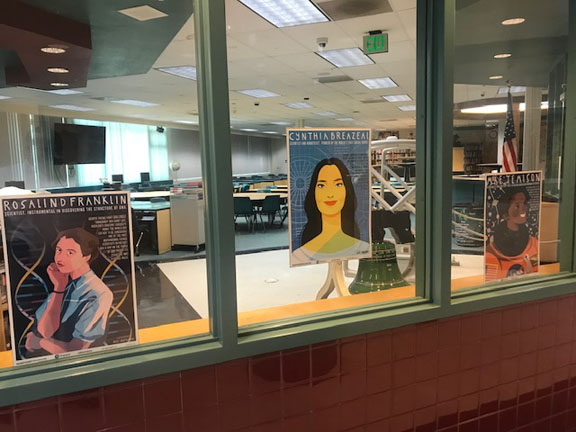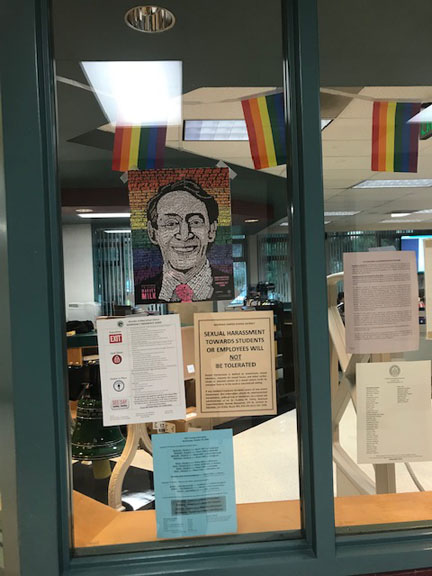By Ani GASPARYAN
A display of books, posters and artwork at Clark Magnet High School’s library is helping educate students about the history of different minority groups.
The display put up in the Clark library was inspired by the Fair, Accurate, Inclusive, and Respectful – FAIR – Education Act, and is meant to get students involved in learning about different minority groups’ histories. The FAIR Act is a California law that requires schools to be inclusive in their curriculum of people with disabilities and lesbian, gay, bisexual and transgender people.
Schools now have to incorporate the histories of groups like Mexican Americans, Asian Americans, LGBTQ people and people with disabilities, said Patrik Davarhanian, a social studies teacher at Clark Magnet High School and the organizer of the FAIR Act display.
“History tends to be a contentious topic unfortunately. Oftentimes, it’s a topic that has excluded the stories of many talented people,” he said. “This act kind of opens it up and allows for us to teach everyone’s history.”
Davarhanian first started organizing a display in Clark’s library last year as a way to get students involved in learning about different groups’ history. He said that students and clubs contribute to the display by bringing art and posters and also by donating books.
“It’s a great opportunity to not only educate the students about different groups of people who walk by and use the library, but the library also gets new books so students can check them out,” he said.
The Fair Act display will be up until next November with each month dedicated to a different minority group. December’s display will touch on Hispanic Heritage, while November’s was about Native American history in recognition of Native American Heritage Month.
Christine Chang, a first-year English student at California State University, Los Angeles and an Clark Magnet High School alumna, was one of the students who contributed posters to the display when she was a Clark student as part of Asian American Pride Month. Her posters were about the Chinese lunar calendar and how the appearance of Asian people isn’t all the same.
Chang said there’s a lot of like racial issues going on in modern society and a poster could somewhat fight discrimination.
“Personally, I haven’t really experienced much racial issues, but I do see it happening within our society,” she said. “There’s still a lot of young individuals being racist in school settings and there’s still a lot of discrimination with race, sexuality [and] gender.”
Davarhanian said the display allows students to appreciate the contributions of different historical figures and feel a sense of community.
“We’ve been trying to improve the sense of belonging at our school,” he said, “and I think [the display] was a great opportunity to try to do that by finding that common thread that connects us all.”




